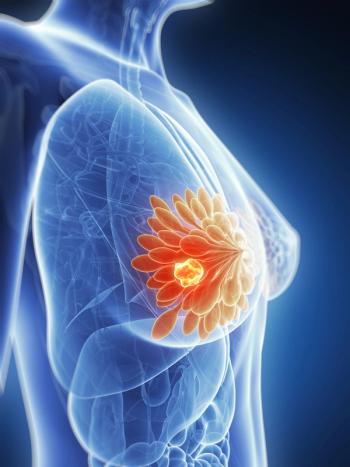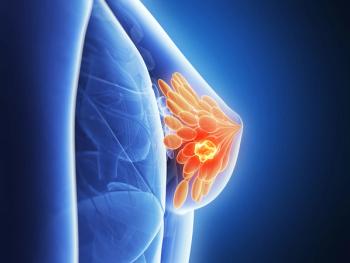
Radiosensitization With Veliparib Promising in Inflammatory Breast Cancer
The rate of severe acute toxicity was relatively low in a study of radiosensitization with veliparib for patients with inflammatory or locally recurrent breast cancer.
The rate of severe acute toxicity was relatively low in a study of radiosensitization with veliparib for patients undergoing radiotherapy for inflammatory or locally recurrent breast cancer after complete surgical resection, according to a small trial. The study did find toxicities at 3 years, indicating the importance of long-term monitoring.
“In patients with inflammatory breast cancer, locoregional failure rates approach 20% despite aggressive multimodality treatment,” wrote study authors led by Reshma Jagsi, MD, of the University of Michigan in Ann Arbor. “Given the role of poly (ADP-ribose) polymerase (PARP) in DNA repair, the potential of PARP inhibitors as radiosensitizers is of interest.”
The new phase I study included 30 patients with inflammatory (25 patients) or locally recurrent (5 patients) breast cancer after complete surgical resection; patients received radiotherapy at a dose of 50 Gy to the chest wall and regional lymph nodes, plus a 10-Gy boost, and veliparib at 1 of 4 doses (50, 100, 150, or 200 mg, twice per day) throughout the 6-week course of radiotherapy. The results were
The median age of patients was 50.5 years, and 24 of 30 were white. Sixteen patients had triple-negative disease, while 8 were hormone receptor (HR)-positive/HER2-negative, 5 were HR-positive/HER2-positive, and 1 was HR-negative/HER2-positive.
Five dose-limiting toxicities in total were observed. Four of these-2 at the 100-mg dose and 2 at the 150-mg dose-were moist desquamation, and the other, at 200 mg, was neutropenia. The probability of dose-limiting toxicity did not exceed 30%, even at the highest dose level in the trial; this was the prespecified target for the trial.
The crude rate of any grade 3 toxicity was 10% after 1 year. At 2 years, the rate was 16.7%, and at 3 years it rose to 46.7%. There were two serious adverse events that developed within the first 2 years of follow-up; one patient had a grade 4 wound infection and late radiation dermatitis, and the other had grade 3 brachial vein thrombosis. Both of these patients had received the twice-daily 150-mg dose of veliparib.
Fifteen patients experienced disease control failures during the 3-year follow-up period; 13 died, all after recurrence. The site of first failure in these patients was locoregional only in two of them; four patients had locoregional and distant failures, and nine patients experienced a distant failure only.
Though the prespecified target for acute toxicity was not exceeded, the authors recommended a phase II dose of 50 mg twice a day if the agent is investigated further, due to the late grade 3 toxicities observed. “Although some of the late adverse events we observed might have occurred even in the absence of the investigational agent and with standard therapy, severe late toxicity is relatively uncommon with standard therapy alone, so we believe that a cautious approach is prudent,” they wrote.
Newsletter
Stay up to date on recent advances in the multidisciplinary approach to cancer.

















































































